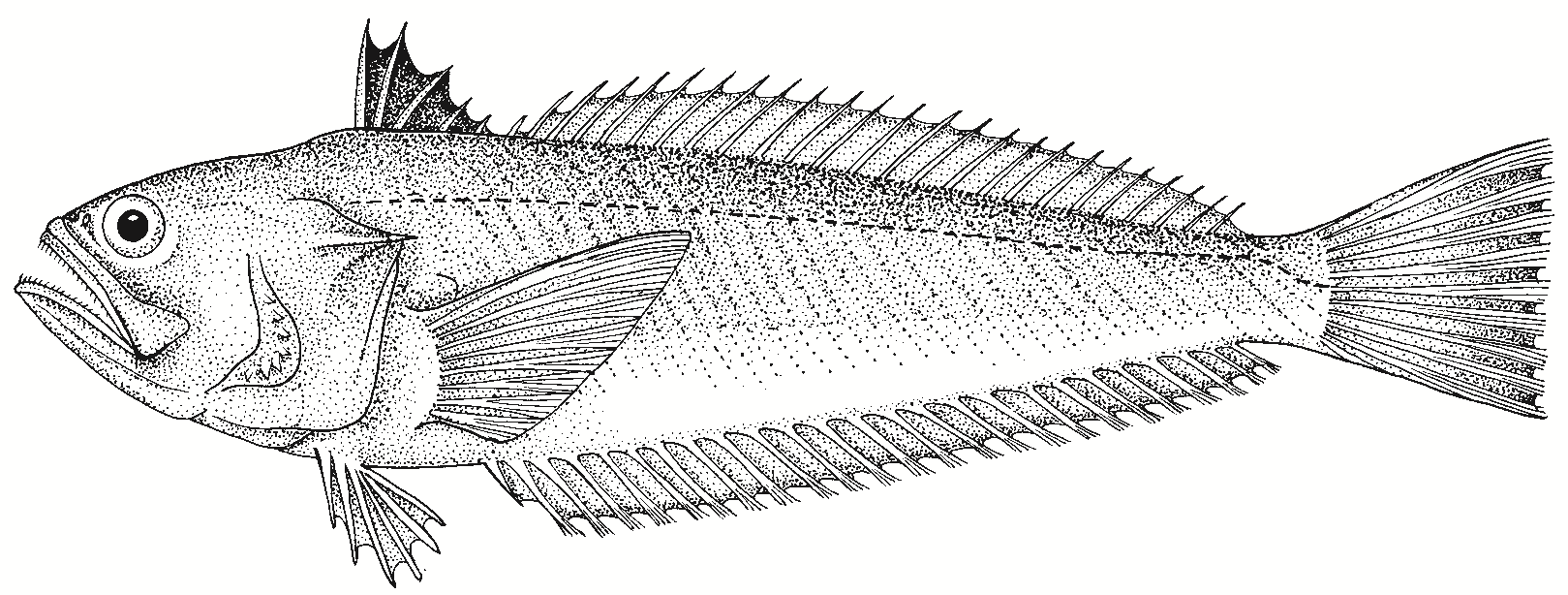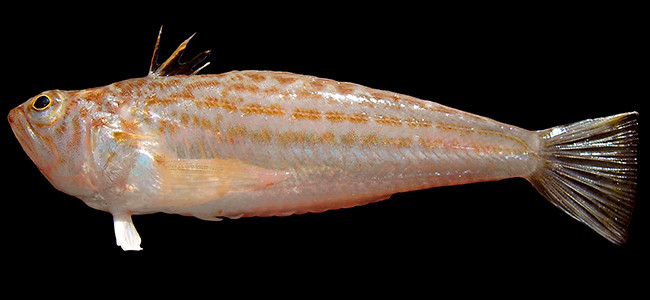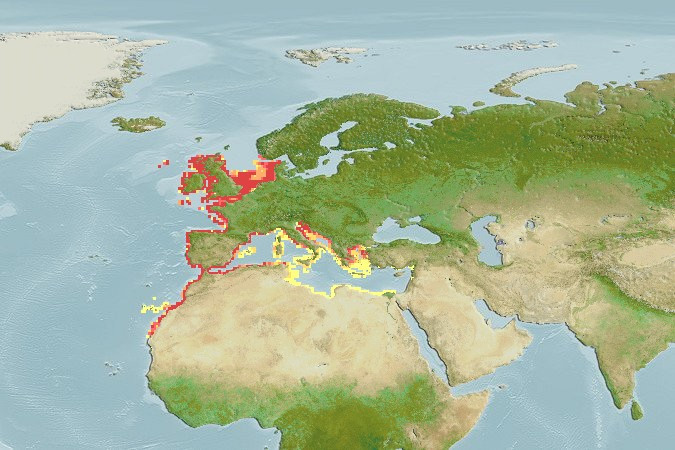Echiichthys vipera, commonly known as the lesser weever or sea viper, is a marine fish belonging to the family Trachinidae. Its scientific name derives from Greek: ‘Echinos‘ means spine, while ‘ichthys‘ refers to fish, and ‘vipera‘ alludes to the viper, due to its behavior and the toxicity of its venom. This species is widely distributed in the northeastern Atlantic, from the North Sea and the coasts of the United Kingdom to the western Mediterranean, including the southern coasts of Europe and northern Africa. It primarily inhabits shallow waters, generally between 1 and 50 meters deep, on sandy bottoms where it can bury itself and remain concealed.

The lesser weever is small compared to other species in the genus, reaching a maximum length of about 15 cm, though most individuals measure between 10 and 12 cm. Its body is elongated and somewhat laterally compressed, with a small head relative to its body. Its coloration is grayish or light brown, with faint vertical bands and a paler belly. One of its most distinctive features is the presence of venomous spines on its anterior dorsal fin and operculum (the gill cover). These spines are connected to glands that produce venom, which they inject when threatened. Although its sting is painful to humans, it is rarely fatal but can cause severe reactions if not treated properly.
Echiichthys vipera feeds on small invertebrates and fish found on the seabed. As a benthic predator, it spends most of its time buried in the sand, with only its eyes and the top of its head visible, allowing it to ambush prey undetected. When prey such as a shrimp or small fish comes near, the weever fish quickly lunges from its hiding place to capture it. This ambush hunting strategy allows it to conserve energy and maximize prey capture efficiency in its sandy environment.
Reproduction of Echiichthys vipera takes place during the warm months, typically in summer. It is an oviparous species with external fertilization. Females release their eggs into open water, where they are fertilized by males. The eggs are pelagic and float in the water column until they hatch. The larvae are also planktonic during their early development stages, dispersing via ocean currents before settling on the seabed as juveniles.
An interesting fact about Echiichthys vipera is its interaction with beachgoers, especially in Western Europe. Because it buries itself in sand near the shore, swimmers often accidentally step on these fish, resulting in venomous stings. To avoid this, it is recommended to wear protective footwear on beaches known to harbor this species. Despite its small size, it is one of the most notorious venomous fish in European waters, and the spines on its dorsal fin can cause intense pain often requiring medical attention.
Photos:


 from
from